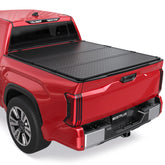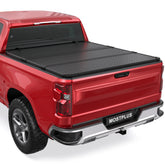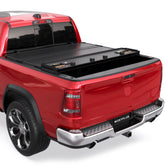How long will brake pads last?
Brake pads are an essential part of your braking system. They ensure your safety. Brake pads are essential to slowing and stopping your vehicle because they are the ones that come into contact with the disc (or drum). Without them, your car's braking would be much less efficient. But brake pads are also highly stressed wear parts that need to be checked and replaced regularly. The life of brake pads depends primarily on how worn they are. You can extend the life of your brake pads by changing your driving habits. In this article, we'll remind you of the basics about the life of this essential component of the braking system.
How often should I replace my brake pads?
The life of a car's brake pads depends very much on how they are used. Brake pads are consumable parts, which means they wear out as you drive. Every time you brake, the pads rub against the rotors and lose material.
Brake disc and pad wear is a natural phenomenon that should be closely monitored. Front brake pads have a life expectancy of 30,000 to 45,000 km. Brake discs generally last 3 times longer than brake pads. This is often between 100,000 and 120,000 km. But more than mileage, it's the wear on your pads that determines when they need to be replaced.
That's why it's important to regularly check the condition of your brake pads and have them checked by a professional during your regular car service. If you notice a squeaking or screeching sound when braking, or if your car takes longer than usual to stop, these are signs that your brake pads may be worn and need to be replaced.
Finally, the brake pad wear indicator is a light on your vehicle's dashboard that lets you know when your brake pads are too worn for optimal performance. This light is represented by an orange circle framed by two broken brackets to the right and left of the circle. When you see this light come on, you know it's time to replace your brake pads.

What factors affect brake pad life?
Brake pad life can be affected by several factors. Understanding these factors is critical to maximizing the life of your brake pads and ensuring safe driving.
Driving style
Aggressive vs. smooth driving: Driving style plays a significant role in brake pad life. If you tend to brake hard or drive at high speeds that require frequent and intense braking, your brake pads will wear faster. Conversely, driving smoothly, with gradual deceleration and greater use of engine braking, will extend the life of your brake pads.
City vs. highway driving
The driving environment also has an effect. In the city, braking is generally more frequent due to traffic, traffic lights and intersections. On the highway, where driving is smoother and requires less braking, brake pads may last longer.
Vehicle type
The type of vehicle you drive can also affect the life of your brake pads. For example, a heavier vehicle such as an SUV or truck will put more pressure on the brakes when braking, which can accelerate brake pad wear. Similarly, if you frequently drive with heavy loads or tow a trailer, your brake pads will be subjected to additional stress.
Brake pad quality
Not all brake pads are created equal! It's like tires, they're all black, but they're not all the same! So the basic rule is to choose a recognized pad manufacturer. Then, as I said, there are different types of pads (organic, semi-metallic, ceramic), each with its own performance and durability characteristics. High-quality pads, although generally more expensive, can last longer and offer better braking performance. That's why it's important to find the right pads for your needs and driving style.

How can I extend the life of my brake pads?
Your vehicle's braking system is vital to your safety and needs to be serviced regularly. Longer pedal travel, a change in consistency or abnormal vibration should be considered warning signs that need to be checked.
Want to save money and extend the life of your brakes? Here are some tips that can make a difference.
Practice eco-driving: Choose a leisurely driving style, especially around town, so you brake less and avoid emergency stops. Eco-driving uses less fuel, preserves tires and extends the life of your brakes.
Anticipate stops and brake gradually: Avoid sudden braking. Try to anticipate stops by gradually slowing down well before you need to come to a complete stop.
Avoid keeping your foot on the brake: After braking hard, take your foot off the brake pedal. This avoids the risk of warping the rotors or sticking the pads due to the high heat of their materials.
Use the engine brake: Although less important on newer vehicles, the inertia of your engine is still an important ally in preserving your braking system. So remember to downshift to reduce the load on your brakes.
Obey speed limits: Driving at excessive speeds requires harder and more frequent braking, which wears out brake pads prematurely.
Limit the weight of your vehicle: Avoid unnecessarily overloading your vehicle. The heavier your vehicle, the harder the braking system must work to stop the vehicle, which accelerates brake pad wear.
Regular checks: Check the thickness of your brake pads regularly. Preventive replacement can prevent damage to the other component of the braking system, the rotors.
Carefully maintain the entire brake system: Change the brake fluid every 2 to 4 years. It is also a good idea to check the condition and level of the brake fluid more often. Make sure the entire brake system is in good working order. Faulty components can increase pressure on the brake pads and wear them out more quickly.
By following these tips, you can not only extend the life of your brake pads, but also improve your driving safety. Regular maintenance and careful driving are the keys to maximizing the performance of your braking system.
Featured Products
- $479.99
$499.99- $479.99
- Unit price
- / per
- $549.99
$549.99- $549.99
- Unit price
- / per
- $489.99
- $489.99
- Unit price
- / per
- $469.99
$489.67- $469.99
- Unit price
- / per














